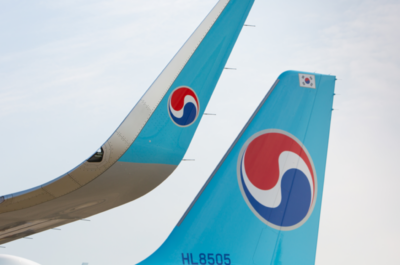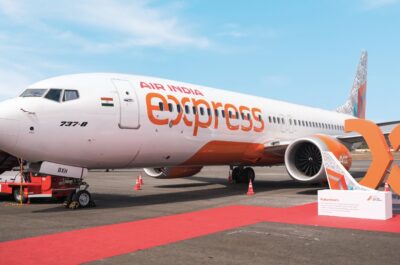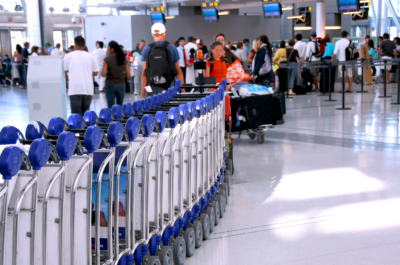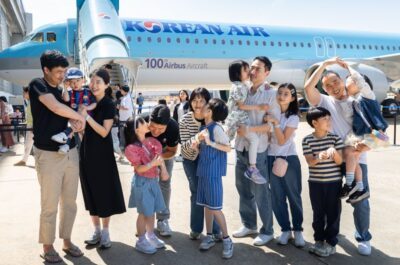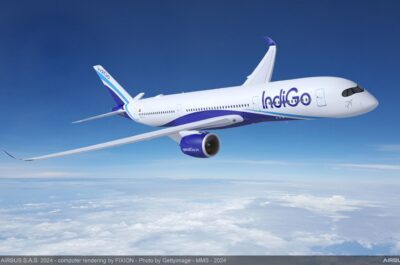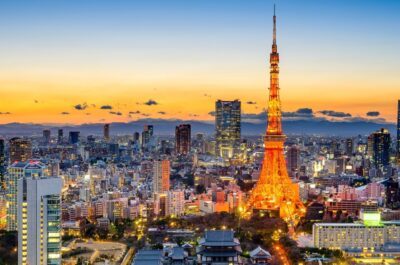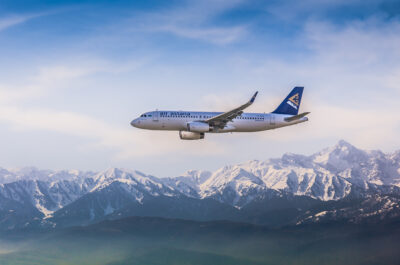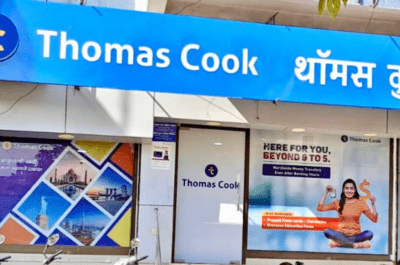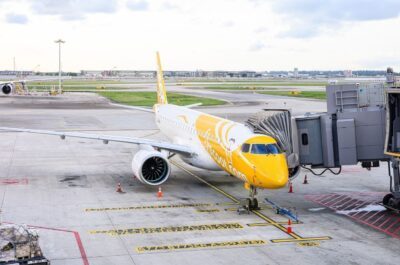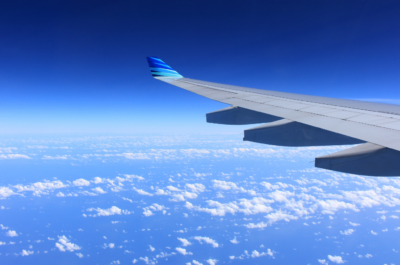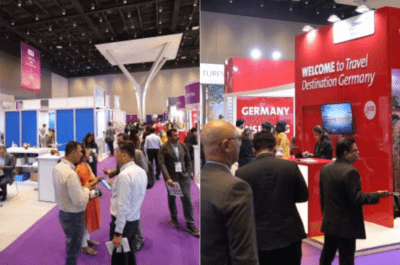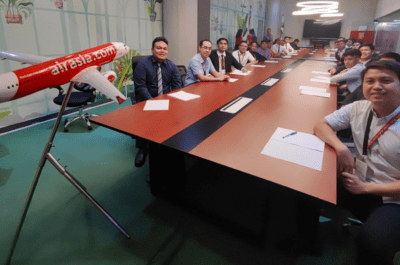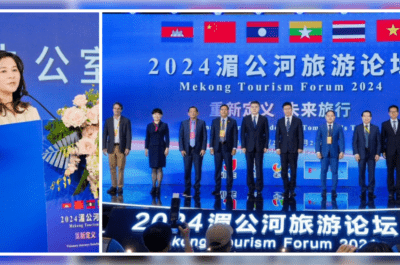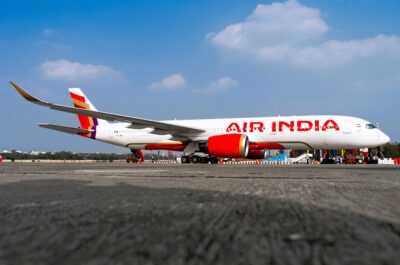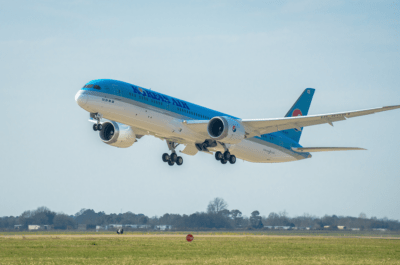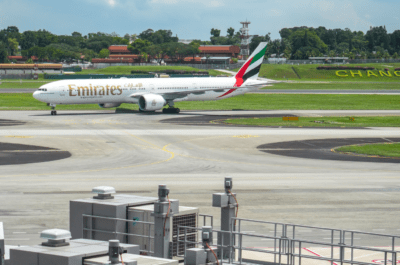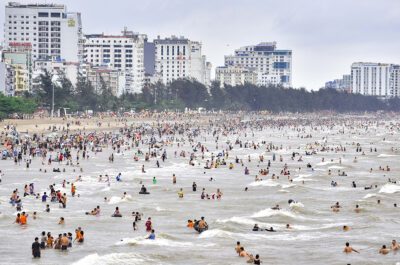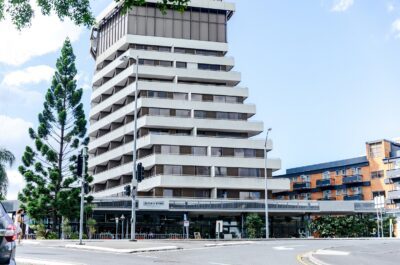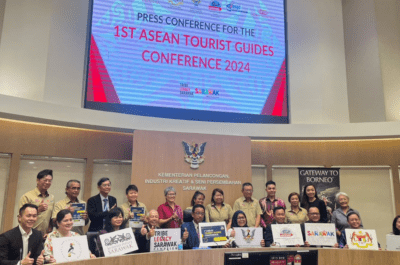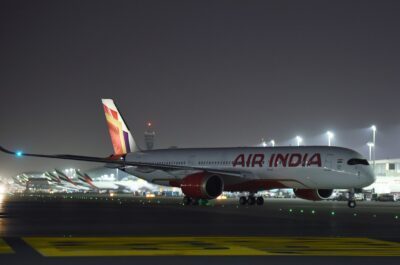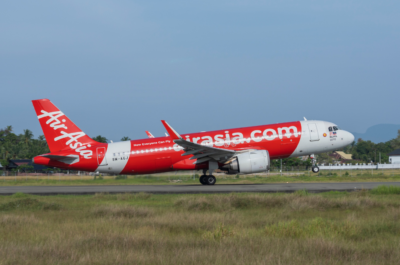Asia’s strong and developing economies are having a ‘tail-wind’ effect on the region’s travel industry with a high and continuing rate of growth and change in 2006/07 says Asia Pacific’s travel facilitator…
Asia’s strong and developing economies are having a ‘tail-wind’ effect on the region’s travel industry with a high and continuing rate of growth and change in 2006/07 says Asia Pacific’s travel facilitator, Abacus International. The company’s President and CEO Don Birch said that strong 5.3% year on year airline passenger growth in Asia Pacific and historically high aircraft load factors of 74.6% during 2006 reported by IATA, tell only part of the story.
“Rapidly growing economies, vast travel infrastructure projects afoot in China and India, unprecedented order books for new planes, the rise of low cost carriers and the internet channel all add to a picture of dynamic change, while the
travellers themselves are often on the move for new reasons,” Mr Birch said.
“While a certain rate of change is a given in the travel industry, it is clear that the current economic tailwind is significantly boosting the rate of growth and change in the industry,” he commented.
“While the rapid growth in the travel industry is delivering potentially rich rewards as hotels and airlines return to profitability, it also poses industry operators many challenges as they position to compete in the emerging environment, bringing a risk of growing pains for the industry and traveller alike.”
Growing again
Judged by travel numbers alone, the travel industry as a whole has now recovered from the lows of 9/11, SARS and the 2005 Asian Tsunami, although communities in the path of the Tsunami are no doubt still deeply affected in other ways.
“Coming off a low base after 9/11, SARS and the Tsunami, the initial rate of recovery was artificially high. While the growth rate is now slowing, it is nonetheless high, and even more importantly, sustainably high,” Mr Birch said.
The next five years will see a slower but still robust period of passenger growth for the airline industry. IATA is projecting 5.9% passenger growth for Asia Pacific in 2007, and an average aggregate growth rate (AAGR) of 5.7% through to
2010, the second highest regional growth rate behind the Middle East which is on track for an AAGR of 6.9% to 2010.
Projections by the United Nations World Tourism Organisation (UNWTO) confirm this optimistic view, with UNWTO predicting continued 4% growth in tourist numbers for Asia in 2007. At 5% per annum, the number of travellers would double in 14 years to almost 300 million regional travellers per year by 2020.
Commenting on Asia Pacific’s 8.3% tourism growth in the first eight months of 2006, UNWTO observed that “the region’s overall performance is remarkable, especially considering that the tourism sector has continued to suffer this year from a succession of natural disasters, health scares and political unrest.”
In a year also disrupted by bomb plots at Heathrow and the Thailand coup, there were no widespread cancellations following the Bangkok bombs, and only a brief dip of 5-10% in hotel occupancy in the Thai capital.
“While we can never be complacent about the potential for those who are intent on harm to disrupt travel in new ways, or the possibility of further natural events such as avian flu, it appears as if the recovery cycle after each event may be getting shorter, confirming the resilience of travellers,” Don Birch said.
Economic tail-wind
While travel and tourism performance in individual markets is influenced by the quality of attractions and services on offer, and whims of international fashion, the single biggest determinant of travel growth is the region’s booming economy.
“Regional differences in economic growth are the strongest predictors of regional differences in air passenger demand growth,” according to Mr Birch.
“The current period is possibly being kinder to airline carriers in Asia than elsewhere because of the evolutionary effects of the period just passed on regional demographics. We’re seeing that people in Asia travel as soon as they
have some extra money in their pocket, and the last two to three years have dramatically increased the amount of disposable income for many people,” he said.
Increases in discretionary income have been especially marked in Korea and Vietnam (with the effect in the latter market being a 30% increase in outbound leisure air travel). The Vietnam economy grew rapidly at 8% and is projected to
slow only marginally in 2007.
Vietnam Airlines now plans to expand its fleet to 45 aircraft in 2007 and to 60 by 2010 emphasising the importance of expanding Vietnam`s aviation infrastructure. Many of the country’s neighbours have been pressing, without success, to add services. Despite these access issues, Vietnam’s passenger traffic grew by more than 13% during 2006.
Looking ahead, economists believe that China, India and Japan will be the key engines of the Asian economy in 2007, with the potential slow down in the United States not expected to have a marked impact on Chinese growth.
The World Bank predicts that China’s economy, which grew by 10.4% in 2006, will expand 9.6% in 2007 and 8.7% in 2008. South Asia’s regional GDP, which expanded by 8.2% in 2006, is expected to grow by 7.5% in 2007. One of the key drivers, India, is set to follow up last year’s 7.7% growth with 8.7% growth in 2007.
Regional travel dynamics are also beginning to feel the positive effects of the return of Japan from a long quiet period. As the economy recovers, more than 17 million Japanese people are forecast to travel abroad in 2007 and the Japanese Government’s push on inbound tourism has driven 7.2% growth over the past year, especially from Korea (up 27%), China (up 25%) and Taiwan (up 14.8%).
The increase in disposable incomes for many people in China and India will mainly boost the demand for domestic and short-haul travel, with long haul developing over the medium to long term. The Boston Consulting Group estimates that “long haul travel has historically only begun to grow strongly in absolute terms once GDP per capita reaches about US$15,000, and it is hard to see China and India reaching this level before 2030 and 2040 respectively.”
The China factor
The Chinese aviation industry is developing at a breathtaking rate, with China’s commercial airline fleet carrying 147 million passengers in the year to November 2006.
While Chinese airlines remain highly regulated, with many operators struggling for profit in the face of high fuel costs in recent times, the Chinese fleet is still projected to expand three-fold to 3,900 planes in the next two decades. CAPA
estimates China will need around 3,000 new aircraft, or one new aircraft delivery every two days for the next 20 years.
India’s airports, both domestic and international, handled 73 million passengers in the 2005/06 financial year, up about 23% year-on-year.
“It is clear that the infrastructure has failed to keep pace with demand growth, leading to bottlenecks – both on the airside with congested skies and on the landside with crowded and inadequate facilities,” Mr Birch said.
Some relief is on the horizon with the much debated airport privatisation starting to deliver improvements in Bangalore, Delhi and Mumbai, part of a wave of 15 airport privatisations across the region in the past year. India’s Ministry of Aviation is even chiming in to upgrade 35 smaller airports in the country as new LCCs take to the skies, connecting cities that were not previously on the air map.
“Indian airports have a long way to go to match their international counterparts in terms of the number of flights handled per hour, non-air revenues, the amenities and overall experience for travellers,” Mr Birch said.
While growth in India has been remarkable to date, less than 1% of India’s 1.1 billion people travel by air, so double digit passenger growth is set to continue for years to come. Airbus is predicting that India will need 557 new aircraft up to 2015.
“This will have the effect of keeping infrastructure shortcomings in the limelight, and will maintain the pressure for improvements,” Mr Birch said.
Low cost, long haul
Low cost airlines (LCCs) were often in the headlines during 2006, making an impact well beyond their current 9% share of the total Asian airline market. Besides the sad loss of lives aboard the recent Adams Air flight, low cost airlines made the news for milestones such as Tiger Airways carrying its two-millionth passenger, and the spectacular rise of Air Asia, which acquired new domestic routes formerly operated by Malaysian Airlines and announced long-term plans to increase its fleet to 165 planes, potentially surpassing SIA and Cathay Pacific in fleet size.
Air Asia is set to expand into the low cost, long haul category via a tie-up with Fly Asia Express which may establish Europe, China and India services, echoing the Hong Kong to London service of Oasis, and Viva’s planned services to Europe, Australia and the Middle East in 2007.
“With national carriers making good progress in their own cost reduction efforts, the industry is seeing the emergence of a hybrid model of airline,” Mr Birch said.
Breaking out
Evolution of the Asian travel market is not just about numbers growth; it is also about the emergence of new segments of more sophisticated travellers. Over the past year Abacus has highlighted the rise of ‘outcome based’ travel – the increase in travelling ‘to achieve something’. This has been a factor in the rise of the ‘grey’ traveller and medical tourist.
Recent statistics by the Singapore Tourism show that the number of medical tourists doubled in Singapore between 2002 and 2005. The Board predicts more than a million medical tourists to Singapore alone by 2012 as the Republic tries to grab a S$6.8 billion share of a S$92 billion global market which will continue to be hotly contested by Thailand and India.
Across Asia, this is a boom time for the Meetings, Incentives, Conferences and Events (MICE) industry. With Hong Kong, Singapore and Thailand leading the pack, Malaysia has also recorded a 25% growth in MICE visitors between 2001- 2005. MICE are going from strength to strength in Singapore – with the Singapore Tourism Business Events in Singapore programme being the next step in the country’s drive towards creating a S$10.5 billion industry by 2015.
There is evidence that a group related to the MICE, but more budget conscious, the SMERFS – who travel for social, military, education, religious and fraternity reasons – are also on the move. A cursory analysis puts the annual value of this market at US$1.7 billion in Hong Kong, Thailand and Singapore alone.
The current boom experienced by Macau, which welcomed 16% (or 2.5 million) more visitors in the year to October 2006, could be a sign of things to come. It signals the future importance of the ‘IR’ – or integrated resort factor for Singapore, which is currently building two world-scale gaming and entertainment complexes due to open in 2009/10.
Hotel highlights
2006 was a stellar year for Asian hotels, with further good times seen ahead for 2007. For example, Singapore hotels charged an average of $164 a night for the first 11 months of last year, a 20% increase on the same period during 2005.
There is a prospect of further rate increases of 10-15 percent in 2007 on the strength of 80% + occupancy. An idea of the scale of demand is that Singapore’s current hotel stock of around 37,000 rooms will need to approximately double by 2015 to meet projected demand from travellers.
Across Asia there is a bulging pipeline of hotel projects, with China currently having 188 hotels under construction, or almost half of all hotels currently being built in Asia, while India has 78 new hotel projects slated to start during 2007.
BCD Consulting predicts that daily rates for hotels across Asia as a whole will increase by 14-17% in 2007 as demand continues to outpace supply. With increasing amounts of intra-regional travel, the LCCs will help drive demand for hotels at every level from budget to luxury, with finding enough trained people to run the hotels being the biggest problem facing the industry.
Travel distribution
The push towards E-Ticketing (ET) prompted by IATA as part of its Simplifying the Business initiative is paying dividends, with 72% of all tickets being ET by November 2006, and ET in China exploding from 11% a year ago to 90% in November.
By the end of 2006, Abacus had enabled 80% of its airline tickets to be ETcapable and the adoption rate of these carriers was 72% as at the end of 2006.
The company is encouraging airlines that have ET capability to use it as the default means of ticketing. However, there are some limitations – the readiness of departure control systems, airport handling issues, and passenger comfort levels. Overall, adoption for ET through Abacus has been encouraging, with 77% of all Abacus tickets issued in South Korea being ET, Thailand 72%, Hong Kong 67% and Taiwan and Singapore on 65% as of December 2006.
At the opposite end of the scale Vietnam and Brunei were yet to adopt e-ticketing, while Bangladesh, Malaysia and Sri Lanka were also trailing in E-ticketing adoption. IATA remains committed to its goal of 100% ET by end of 2007.
Globally, 2006 was a year of change for GDSs with industry consolidation underway in the form of TravelPort acquiring WorldSpan for US$1.4 billion with the aim of merging it with Galileo, while November saw Sabre Holdings (a 35%
shareholder in Abacus) acquired in a private equity buyout by Silver Lake Partners and Texas Pacific Group, for around US$5 billion, subject to regulatory approvals.
A recent survey by Abacus highlighted the competitive pressures felt by many travel agents in Asia, and pointed to the need for a continued focus on managing customer relationships and to become more expert in consumer behaviour.
“The future belongs to travel agents who can mine the rich data already held by most of them and who can leverage their knowledge of trip patterns, traveller behaviours and trend data to identify opportunities for corporate customers to make savings and recommend new trips for consumers,” Mr Birch said.
Hotels are selling strongly through both GDS and key internet sites, with TravelClick reporting 12% year on year increase for the third quarter of 2006 in the number of room nights booked via these channels in Asia Pacific, with GDS driving average daily rates as much as 30% higher for hotels than those booked via the internet.
Many large insurance companies are now using GDS as a channel, and Abacus is reporting 40%+ growth with the distribution of travel insurance products such as AIG, Assist Card, MSIG (Aviva), AXA, Blue Cross) across a range of markets
in Asia.
Online Travel Agencies may have enjoyed high growth rates during the year but will also be pre-occupied with customer loyalty – a recent PhocusWright survey found that, worldwide, nearly 70% of all on-line travel buyers had numerous
preferred sites, pointing to the difficulty of inspiring customer loyalty. The further rollout of ‘dynamic packaging’ in 2007 will change the face of travel as consumers get more control and flexibility.
“For example more price conscious customers will seek out options that appear to offer lower pricing though opaque packaging, while the less price sensitive aremore interested in choosing just the elements they will actually use,” Mr Birch said.
During 2007, Abacus will be releasing a new fares and pricing solution for travel agents with a more powerful fare search functionality offering increased pricing flexibility and efficiency. Agents can be confident of getting the best fares for each sale using a simple three step process to search, quote and sell.
Good shape
Early 2007 finds the regional travel industry in good shape, albeit with the major airlines still focused on improving profitability. With healthy growth in passenger numbers and equally strong levels of competition among travel suppliers, ongoing large investments in new technology and regional infrastructure, will leave the industry in a markedly new shape over the next five years.
“The upcoming Chinese New Year/Easter period is the key bellweather period for the year ahead and indicators are strong at this stage,” Mr Birch concluded.
Theodore is the Co-Founder and Managing Editor of TravelDailyNews Media Network; his responsibilities include business development and planning for TravelDailyNews long-term opportunities.








